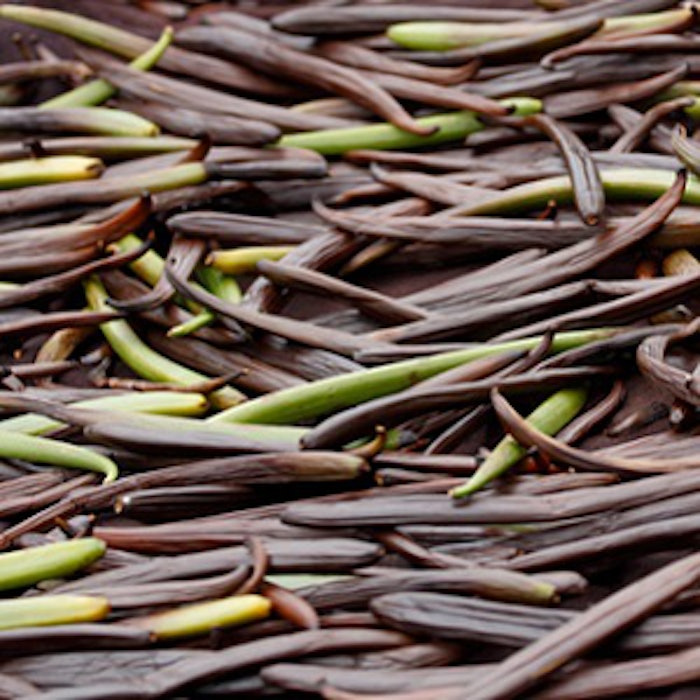
Vanilla bean curing, whether occurring naturally on the vine or practiced at curing stations, is a facet of plant senescence. This process is an actively regulated and genetically controlled development that includes slow and ordered breakdown of selected tissue structures with associated membrane leakage, degradation of chlorophyll and proteins and extensive lipid peroxidation (due to enhanced production of oxygen free radicals); the oxygen free radicals are, in fact, the primary mediators of oxidative damage during plant senescence.1 Dropping of leaves from plants in the fall is the most common example of plant senescence, which entails massive mobilization and recycling of nitrogen, carbon and minerals to other parts of the plant.
Human intervention is required to pollinate the vanilla flower that eventually results in formation of immature pod or bean. The bean ripening process—which is visually characterized by yellowing of the pod at the distal extremity—takes seven to nine months. The ripe bean, then, begins to split at the end of the pod and starts “browning” at the same location.










